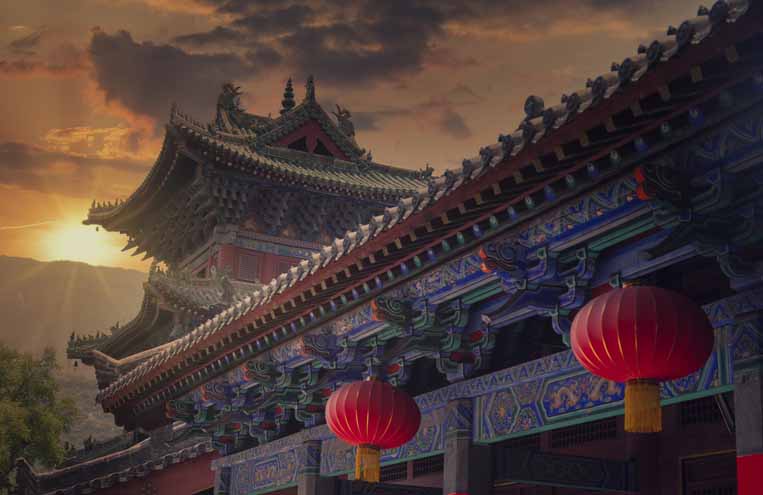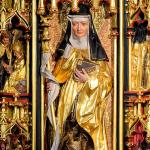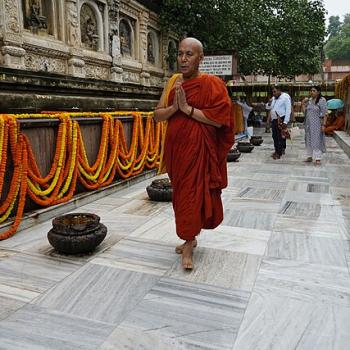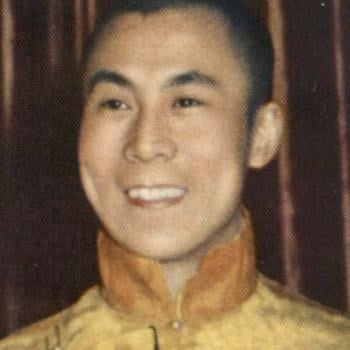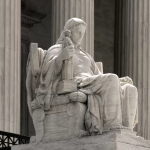It is the legendary location of hundreds of martial arts action movies, including Shaolin Temple (1982) starring Jet Li and Shaolin (2011) starring Andy Lau and Jackie Chan. It was depicted in flashbacks in the popular 1970s television series Kung Fu starring David Carradine. And it’s a real place, a real Buddhist temple, with a real history. It is the Shaolin Temple of China.
Are the legends about kung fu monks true? There is solid documentation of Shaolin Temple monks practicing martial arts that goes back to the early 7th century CE. So it’s certainly the case that the legend of Shaolin kung fu has some basis in fact. It’s romanticized and embellished fact, certainly, but not complete fabrication. Here I will tell you what I know to be true, or at least what I know to be documented somehow. Note that while I’m using the name the Shaolin Temple, Shaolin Monastery is equally correct.
The Shaolin Temple’s Beginnings
The Shaolin Temple was built in the late 5th century on a tree-covered mountain called Shaoshi. The most common date given for completion and dedication of the temple is 496 CE. Shaoshi is the old name of a central peak of Mount Song, or Songshan, long considered sacred by Daoists. The name Shaolin means “small grove.” If you were to look for Shaolin today, you would ask directions to Wuru Peak of the Songshan mountain range in Dengfeng County, Henan Province, China.
The emperor Xiaowen (467–499) of Northern Wei commissioned the building of the Shaolin Temple. In those days China was not a unified nation as we know it now. Instead it was separated into northern and southern empires. The Wei dynasty ruled much of what is now north China from 386 to 535 CE. According to the monk and scholar Daoxuan (596–667), Xiaowen built the Shaolin Temple originally for a Buddhist meditation master named Fotuo, or Batuo, or Buddhabhadra, said to have come from southern India to teach Buddhism. Buddhism had been introduced into China in the 1st century CE, and by the 5th century it had become respectable.
Fotuo was the temple’s first abbot. He was a Theravada teacher by some accounts. Other accounts connect him to the Chan school, but I greatly doubt that is accurate.
The Zen Connection
The Shaolin Temple also came to be associated with Bodhidharma, the legendary founder of the Chan school of Buddhism. You may know Chan by its Japanese name, Zen. Bodhidharma is said to have spent nine years meditating in a cave on Shaolin Temple grounds very early in the 6th century, a short time after the temple’s founding. You can also find a lot of stories claiming that it was Bodhidharma who introduced martial arts to Shaolin. Do take those accounts with several large grains of salt.
Speaking as the author of a book on the history of Zen (The Circle of the Way: A Concise History of Zen from the Buddha to the Modern World) I have to warn you that corroboration of Bodhidharma’s life is pretty darn flimsy. We don’t even know with absolute certainty that he was a real person. Even assuming he was a real person, the oldest records say nothing about him that would connect him to martial arts. The martial arts-Bodhidharma stories cropped up in Chinese chronicles a few centuries after the fact. At some point in the 6th or 7th century the Shaolin Temple did come to be associated with the Chan/Zen school, however, as it is today.
Early Martial Arts at Shaolin Temple
We cannot say for certain how martial arts came to the Shaolin Temple. In those days temples were sometimes attacked by bandits or warlords, so it was not unheard of for monks to be prepared to defend them. There is early documentation that two of Abbot Fotuo’s disciples were remarkable acrobats, and over time these two were said to have martial arts skills also. But that’s the best I can do before the 7th century.
However martial arts training at Shaolin got started, at some point the activity of defense preparation also became an exercise in balance, concentration, and mindfulness, all important skills connected to Buddhist practice and meditation. There is also wuxin (in Japanese, mushin), “no mind,” in which one is so in harmony with an activity that a task seems to accomplish itself. Wuxin is connected to both meditation and martial arts.
The Northern Wei and other dynasties were replaced by the short-lived Sui Dynasty (581-618 CE), which unified China. The two Sui emperors, Sui Wendi and Sui Yangdi, accomplished much, but at a terrible cost. Rebellions ensued. The Sui dynasty was replaced by the celebrated Tang dynasty (618-906 CE), which famously hosted a golden age of Chinese culture.
Our interest here lies in the role played by Shaolin monks to establish the Tang dynasty. Shaolin monks are said to have attacked and defeated Sui troops led by a general named Wang Shichong, and this defeat was critical to the eventual Tang victory. This act of aggression by the monks is documented well enough that I believe we can assume something like it really happened. Details vary, however.
The Famous Story of the Thirteen Shaolin Warrior Monks
According to one version of this story, the future Tang emperor Li Shimin appealed to the Shaolin monks for help in defeating Wang Shichong. According to legend, thirteen warrior monks responded to Li Shimin and gave him a victory. There is another version of the story I found in an academic history. At one point the Sui general Wang Shichong made the mistake of occupying property belonging to the Shaolin Temple. So monks attacked the general’s troops and defeated them, which was a significant help to the Li family, which would found the Tang Dynasty.
There is also a third version, and possibly several other versions I don’t know about. The first Tang emperor, Gaozu, designated his second oldest son, Li Shimin, as heir to the throne. Other Li family sons disputed that arrangement and began a civil war. The Shaolin monks fought for Li Shimin, who would become the second Tang emperor, Taizong. Taizong, who reigned from 626 to 649, is remembered to this day as one of China’s greatest leaders. I understand Taizong sent an official letter of gratitude to the Temple thanking the monks for their support. There is also a stele erected at Shaolin that calls out the names of 13 monks who fought with particular skill in the service of the Tang dynasty, although it’s not clear when the stele was erected. Nevertheless, and in spite of the conflicting narratives, I believe Taizong’s letter and the stele are the oldest tangible evidence that the Shaolin monks had developed significant fighting skills by the 7th century.
Several centuries later, the Ming dynasty (1368-1644) called on the Shaolin monks to help it deal with raids by pirates along China’s coastline. The pirates were referred to as “Japanese pirates,” although it’s probably the case they weren’t all Japanese. It is documented that Shaolin monks engaged in at least four battles with pirates in 1553, to mixed results. I understand this bit of history provided fodder for several more feature films and at least one Chinese television series.
Hard Times at the Shaolin Temple
The temple buildings have all been destroyed and rebuilt several times over the centuries. One of the most devastating episodes in the temple’s history occurred in 1641, when forces opposed to the Ming dynasty sacked and burned a large part of the temple complex, slaughtering many monks, before marching on to Beijing. The temple was known to support the Ming dynasty, making it a target. Recovery was slow. In 1704, the Kangxi Emperor of the Qing dynasty made a gift of his own calligraphy to the Shaolin Temple to signify imperial favor. After that, monastic and martial arts training resumed at Shaolin. It’s said it was at this point the monks developed the “empty hand” fighting techniques over weapons training so they would seem less threatening, either to future dynasties or their challengers.
Then came the 20th century. More than a dozen buildings were burned down, and many monks slaughtered, by the warlord Shi Yousan during a time of civil unrest in 1928. Although a few monks continued to live there, the temple was mostly abandoned after that attack. (Note that the 2011 film Shaolin, filmed at the Shaolin Temple, seems to be a fictionalized nod at what happened in 1928. It’s an uneven film, but there are some delightful scenes. See this scene with Jackie Chan, who plays the temple cook.)
Then in 1966, Mao Zedong’s Cultural Revolution made Buddhist temples a primary target of the Red Guard. The Shaolin Temple was sacked again, and the few remaining monks — most of them elderly — were flogged and paraded through the streets.
The Shaolin Temple Reborn, Sort Of
Mao Zedong died in 1976, and in 1981 the Chinese Communist Party passed a resolution that repudiated the Cultural Revolution. So it was over. In the meantime, the television series Kung Fu (1972-1975) and Bruce Lee’s popular film Enter the Dragon (1973) had introduced western audiences to highly fictionalized versions of the Shaolin Temple. Then came the 1982 Shaolin Temple film, which made Jet Li a star and was a smash hit in China. The leaders of China realized they had a tourist attraction at hand.
China cleaned up and rebuilt the temple complex, with help from donations from martial arts clubs around the world, and promoted the Shaolin Temple as a tourist destination. Foreign tourists in the 1980s were disappointed to find the monks living there weren’t doing martial arts, although the neighboring communities were teaming with martial arts schools. Well, that could be fixed. At some point real martial artists began living in the temple as monks. In 2005 the temple began hosting a live reality television show called “Chinese Kung Fu Star Search.” Viewers could text message to vote for their favorite contestants. A few years later road shows of Shaolin monks performing their best kung fu skills began touring the world. Tourists to the temple today can see a daily demonstration of martial arts training and enjoy a nice lunch. How much Buddhism is going on there, however, I cannot say.
Traces That Remain
Although many of the structures in the Shaolin Temple complex today are only a few decades old, there are some older buildings that pre-date the 20th century. Among these is the Hall of a Thousand Buddhas, built in 1588. Inside the hall is a brick floor with rows of depressions, about a yard apart. These depressions were formed over the centuries by monks pressing their feet down on the bricks to improve their fighting stance. Nearby is a display of antique spears, halberds, and tridents from the old days. Another structure of note is the White Robe Hall, probably built in the 18th century, which features old frescoes of monks engaged in martial arts.
The oldest part of the temple is the Pagoda Forest. This is actually a cemetery, and the “pagodas” are the large stone grave markers. The Pagoda Forest has mostly been left alone through the years. The Shaolin Temple’s most illustrious monks are interred there. I understand the oldest grave is that of Master Faru, a significant figure in Chan/Zen history, who died in 689.
